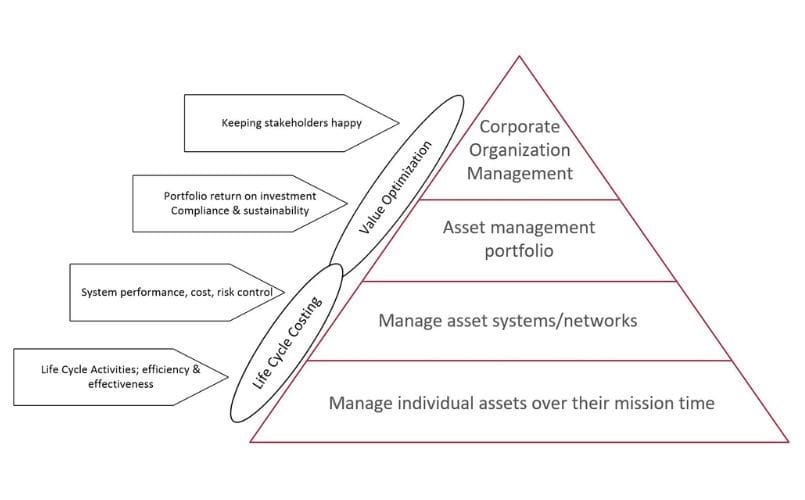Asset Management Using a Value Chain Approach

The concept of the value chain emerged with Michael Porter of Harvard University in the mid-1990s. Professor Porter’s model, which explains the “activities a company performs to design, produce, market, deliver and support its products” gave businesses a powerful analytical tool to understand their competitive position, identify areas for improvement and make more informed strategic decisions. It became a widely adopted framework for evaluating and optimizing business operations.
Applying the value chain approach to asset management provides us with an important mental model that helps us develop asset management thinking. Asset management thinking helps an organization consider how investments in assets helps them maintain competitive advantage, be accountable to their commitments to sustainability, and meet the needs and expectations of internal and external stakeholders.

The foundation of the value chain is where the care, repair and operation of assets takes place. The next level up is where we view assets within systems or networks. This is where the organization observes the performance of these systems, their costs, risks and opportunities. The upper intervals of the value chain are where governance over such things as compliance and sustainability occur. The very top of the value chain is where the organization seeks to meet the needs and expectations of its stakeholders.
Asset Management & Sustainability
Consumers, investors and regulators are among the many stakeholders increasing the demand for accountability and transparency in the sustainability area. Whether they realize it or not, the C-Suite’s ability to materially demonstrate, deliver and report on sustainability objectives has a critical dependency on the asset management system. The value chain approach to asset management is a useful model to help communicate that dependency and demonstrate how the asset management system is consistent and aligned with sustainability goals. Without it, asset management efforts can suffer from blind spots, be misunderstood by the organization and fall short of the intended outcome to be able to demonstrate their performance commitment to sustainability objectives.
Using a Value Chain Approach for Selecting Technology
The topic of digital transformation, IoT and artificial intelligence have dominated the marketplace. This is due to the economics of technology making advanced analytics widely available at a fraction of the cost it used to be. These are relevant topics and deserve some attention given how the economics have rapidly evolved and how accessible powerful technology is today. The marketplace is teeming with vendors promoting their digital solutions. This can distract management’s attention away from existing processes and organizational capabilities and cause them to overlook what’s already in place and working well.
Using a Value Chain Approach for Business Outcomes
Market fundamentals have permanently shifted. Energy transition, renewables and other green projects are now permanent fixtures of the landscape of every market – be it public sector or private sector. Sustainability objectives are top of mind for executive leadership, all day, every day. Asset management practitioners can be invited into the board room and earn a permanent seat at the table the same way other management systems like environment, safety and quality have in recent decades.
Want to learn more? Connect with us here.